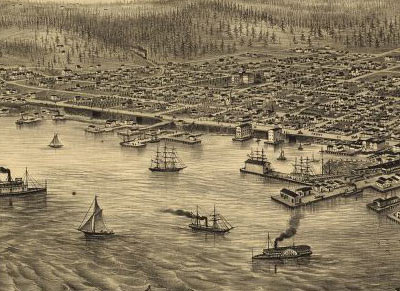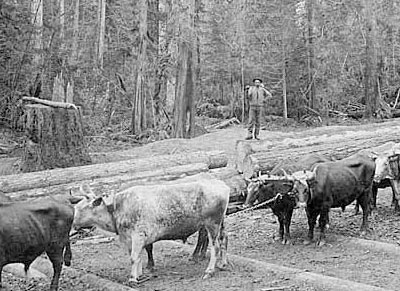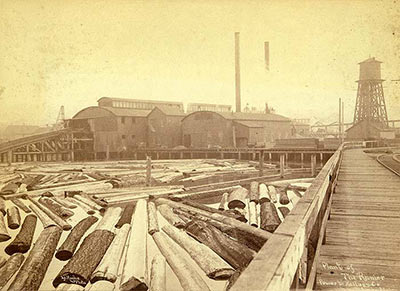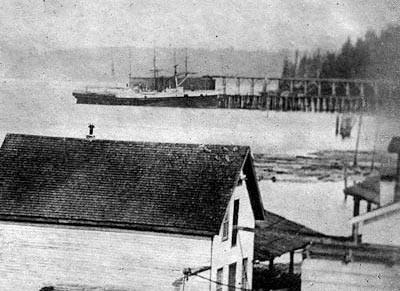RESOURCES
- HistoryLink.org essay on the Seattle Coal & Transportation Company
- HistoryLink.org essay on Lake Union Lumber and Manufacturing
Links to external websites do not constitute endorsement by WSDOT of the linked websites or the opinions, information, products or services contained therein.
Natural resources—especially coal, timber, and fish—drove early Seattle's economy. Demand in rapidly growing local communities and in outside markets, particularly San Francisco, led to rapid construction of sawmills and fish-processing operations on Puget Sound's bays. But the lack of an adequate transportation network hindered development of the coal mines in the Cascade foothills.
The topography of King County made it difficult to develop transportation infrastructure between Lake Washington and Elliott Bay. Thick forests covered the hillsides and it took years before wagon roads, often following Indian trails, were cut through them. Even then, steep hills discouraged any idea of moving tons of coal over them. Limited local capital also stymied plans. Building a railroad required cash, and efforts to get outside investors interested in the projects fell flat.
As demand for coal grew in the new settlements on Puget Sound and in San Francisco, efforts to move coal from the foothills to the docks on Elliott Bay increased. On March 22, 1872, the Seattle Coal & Transportation Company began operating Seattle's first railroad. Established by founders of the Seattle Coal Company, the railroad carried coal from a dock on the south end of Lake Union to coal bunkers at the foot of Pike Street, on Elliott Bay.
The coal arrived at the south Lake Union dock via a tortuous route from a mine in Newcastle, located near the south end of Lake Washington. Coal was transported from the Newcastle mine to the Lake Washington shore via tramway. It was then loaded into scows guided across Lake Washington by tugboats. Arriving at a strip of land called the Montlake Portage, it was unloaded from the scows and rolled onto another tramway, carted over Montlake Portage, reloaded onto barges at Lake Union, barged across Lake Union to the dock at south Lake Union, and from there, loaded onto the new railway, which carried it over Denny Hill (later flattened by regrades), roughly along the route of today’s Westlake Avenue. The railway turned at Pike Street and carried the coal to bunkers at the end of that street.
This little railway operated until 1878, when the Seattle & Walla Walla Railroad arrived at Newcastle and provided a more efficient route around the south end of Lake Washington through Renton and downtown Seattle to Elliott Bay.
The same challenges limited the development of logging operations along the shores of Lake Washington. Until the 1880s, all sawmills in Seattle operated on Elliott Bay, relying on timber brought in from surrounding hills. As standing timber along the bay disappeared, mill owners began to look elsewhere for forested land. In 1882, Lake Union Lumber and Manufacturing constructed the first sawmill on Lake Union, marking the beginning of the shift northward of industries that would eventually encircle the lake. At first the company milled logs from the forests surrounding Lake Union.
After 1885, when the Lake Washington Canal Company dug a log canal across the Montlake Portage, the mill, then known as the Western Mill Company, processed logs floated in from forests around Lake Washington and Lake Sammamish. Other mills along the shores of Lake Union and Salmon Bay, connected by another log canal to Lake Union, cut lumber, doors, sashes, shingles, and other wood products. By the turn of the century, Ballard, on Salmon Bay, would proclaim itself “Shingle Capital of the World,” producing 322 million wooden shingles in just one year.
Visit HistoryLink.org to learn more about mining and coal in King County and sawmills on Lake Union.



